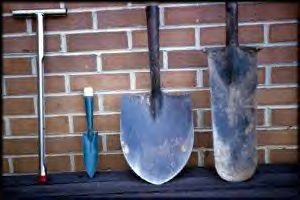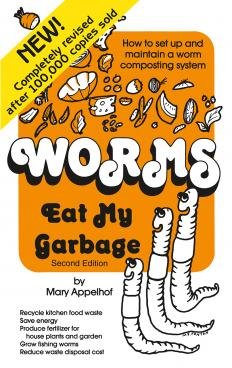

To collect samples use a stainless steel or chrome-plated soil probe, hand garden trowel, shovel or spade (displayed left to right in the picture below). Do not use brass, bronze, or galvanized tools because they will contaminate samples with copper and/or zinc.

The soil probe is the best tool for collecting soil samples. The soil probe works better than a shovel or trowel because this tool equally collects soil in a continuous core from the surface through the entire sampling depth with minimal disturbance of the soil. It also allows for faster sampling.
Some of the disadvantages of a soil probe are: it cannot be used when the soil is too wet because the soil compresses; it cannot be used when the soil is too dry because it is difficult to penetrate the soil. Soil probes also do not work well in soils that contain gravel.
Soil probes are available through agricultural supply companies or your agriculture Extension agent may be able to help you locate a supplier. Cost is typically $25 or more.
Mix soil samples in a clean, plastic bucket. If the bucket has been used to hold fertilizer or other chemicals, wash and rinse it thoroughly before using it for soil samples. Even a small amount of lime or fertilizer transferred from the sampling tools to the soil can seriously contaminate the sample and produce inaccurate results.
In addition to these tools, if you plan to submit your sample to a Soil Testing Laboratory, you may need a Soil Sample Information Sheet and a Soil Sample Box. Both are available from your the extension office in your county or city. Look in the government pages of your phone book or extension office for the address and phone number of your local Extension office or buy your own soil testing products
.Before we proceed let's check what you have learned about the proper equipment for soil sampling!
From the list below, select the group of tools that would be best to use for soil sampling.


 "Beautifully illustrated and practical Are you ready to take your garden from good to great?
Learn how to build your soil...and more!
"Beautifully illustrated and practical Are you ready to take your garden from good to great?
Learn how to build your soil...and more!
Discover how to easily build an attractive and affordable greenhouse that will grow anything in any conditions. Also, building your own greenhouse just makes economical sense. You can build a greenhouse at just a fraction of the cost of buying a pre-built one. Most pre-built greenhouse you buy need to be assembled anyway, you are really just paying hugely inflated prices for the material.

The book that started a backyard worm revolution! With more than 150,000 copies sold, this is the bestselling and remains the definitive guide to vermicomposting--a process using red worms to recycle human food waste into nutrient-rich fertilizer for plants. Author Mary Appelhof provides complete illustrated instructions on setting up and maintaining small-scale worm composting systems. Read More...